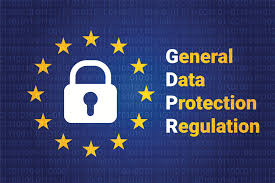 GDPR Compliance
GDPR Compliance
In today’s data-driven world, organizations must ensure compliance with the General Data Protection Regulation (GDPR) to protect personal data and uphold individuals’ privacy rights. GDPR compliance monitoring involves regularly assessing how data is collected, processed, stored, and shared to confirm adherence to GDPR requirements. Here are key steps for effectively monitoring GDPR compliance:
1. Conduct Regular Data Audits
Data audits are essential for understanding the types of personal data the organization handles, the sources, and the methods of processing. Regular audits help identify any gaps or non-compliant practices, ensuring the organization continuously aligns with GDPR’s principles.
2. Implement Data Protection Policies and Procedures
Organizations should establish comprehensive data protection policies that outline the procedures for data handling, breach responses, and individual rights management. These policies should be reviewed periodically to reflect updates in regulations or changes in data processing activities.
3. Train Staff on GDPR Principles
Regular training ensures employees understand GDPR requirements and their role in data protection. Training programs should cover data handling best practices, data security, and the importance of respecting data subjects’ rights. Continuous education reduces the risk of non-compliance caused by human error.
4. Monitor Data Subject Rights Requests
GDPR grants individuals several rights, such as the right to access, rectify, and delete their data. Organizations must have a system in place to track and respond to these requests within the required timeframe, ensuring that all rights are upheld consistently.
5. Utilize Data Protection Impact Assessments (DPIAs)
For new projects or data processing changes, conducting DPIAs is crucial to evaluate potential risks to data subjects’ privacy. DPIAs help in identifying and mitigating risks early, maintaining compliance, and demonstrating a proactive approach to data protection.
6. Regularly Assess Data Security Measures
Data security is a core component of GDPR compliance. Regularly testing security measures, including encryption, access controls, and breach detection systems, ensures they remain robust against evolving cyber threats and maintains the integrity and confidentiality of personal data.
7. Document Compliance Efforts
GDPR mandates organizations to demonstrate compliance. Keeping detailed records of data processing activities, compliance measures, DPIAs, and training sessions is essential for demonstrating due diligence in case of audits or inquiries from regulatory authorities.
Conclusion
Monitoring GDPR compliance is an ongoing process that requires vigilance, adaptability, and a proactive approach. By implementing these practices, organizations can ensure they are not only meeting GDPR standards but also fostering trust with their clients and protecting the personal data they manage.

 GDPR Compliance
GDPR Compliance